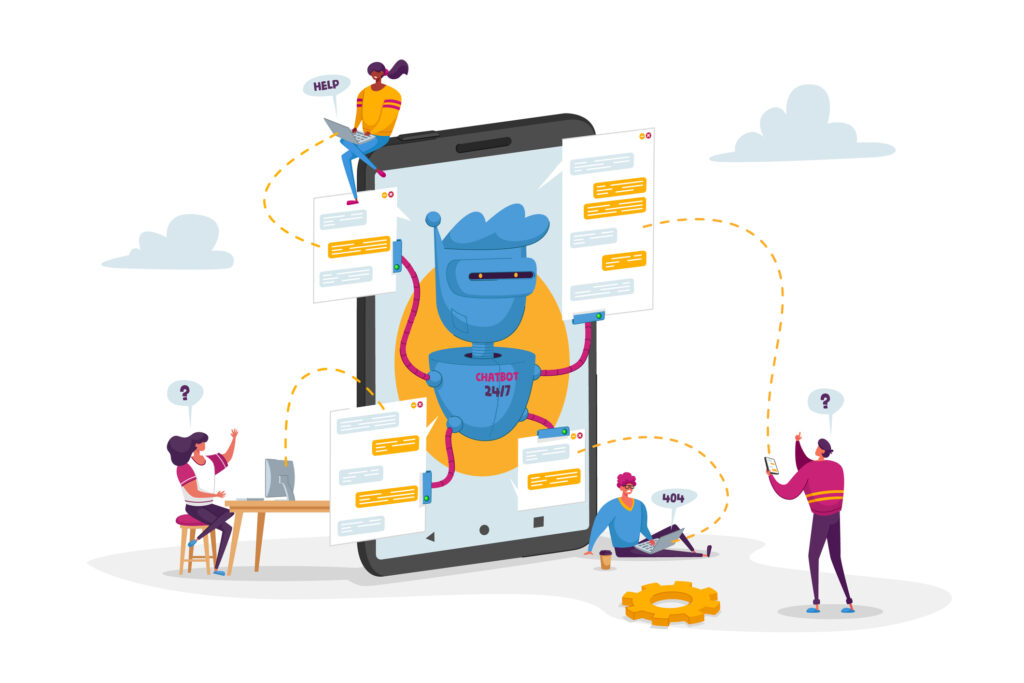AIOps (Artificial Intelligence Operations) applies machine learning and data science to IT operations to automate and improve IT operations management (ITOM) and IT service management (ITSM). AIOps promises to enable predictive analytics, enhance performance, and increase efficiency by automating data collection, analysis, and correlation across various IT domains.
However, integrating such innovative technologies into existing IT infrastructures takes much work. These challenges span technical, cultural, and strategic domains, and overcoming them is critical for successful AIOps adoption.
This article examines organizations’ various hurdles when implementing AIOps and offers insights into potential solutions. We listed the top eleven based on our up-to-date observations and practical experiences.
Data Quality and Integration
Challenge: At the core of AIOps is data – vast amounts of it. The quality, structure, and consistency of this data are paramount for the effectiveness of any AIOps solution. Data from logs, metrics, monitoring tools, and incident tickets are often siloed and can vary in format and relevance. AIOps platforms must integrate this heterogeneous data to form a comprehensive view of an IT environment, which is a non-trivial task.
Overcoming the Challenge: Organizations need to implement robust data governance and management practices to ensure high data quality. This may involve data cleansing to correct inaccuracies, enrichment to enhance information, and transformation to ensure compatibility. The AIOps solution should also support a wide range of data sources and types, necessitating a unified data model to facilitate integration. Building or adopting data integration platforms can also play a critical role in ensuring that the data fed into the AIOps systems is coherent and comprehensive.
Tool Integration and Compatibility
Challenge: Modern IT environments are a complex mix of legacy systems and modern applications, both on-premises and in the cloud. These systems often operate in silos, with dedicated tools that are not natively designed to communicate with each other. A significant challenge is ensuring that AIOps platforms can integrate with this varied toolset.
Overcoming the Challenge: A successful AIOps implementation requires a platform that offers robust APIs (Application programming interfaces) for integration with various IT management tools. Additionally, containerization and microservices can be leveraged to wrap legacy systems and expose them to modern interfaces, facilitating integration. Organizations may need to review their IT landscape to identify and replace tools that are too outdated to integrate effectively with an AIOps solution.
Complexity and Scalability
Challenge: As organizations grow, so does the complexity of their IT operations. AIOps systems need not only to cope with this complexity but also to scale accordingly. They must handle an increasing volume of data and a growing number of IT components without performance degradation.
Overcoming the Challenge: When selecting an AIOps platform, it is important to consider its underlying architecture. The system should be designed for scalability, typically through cloud-native services that can expand resources as demand increases. AIOps solutions should also use technologies such as distributed databases and processing to manage large datasets efficiently. The scalability strategy should include technical scalability and the ability to scale processes and teams to manage the growing AIOps environment.
Cultural Resistance and Change Management
Challenge: Introducing AIOps into an organization can disrupt established processes and roles, leading to resistance among IT staff. Employees may fear obsolescence or feel machines infringing on their professional territory.
Overcoming the Challenge: Addressing cultural resistance begins with effective change management. It is crucial to involve all stakeholders early in the implementation process and transparently communicate the benefits and changes. Training programs can help staff transition to new ways of working with AIOps tools. Demonstrating that AIOps is a tool to augment their capabilities rather than replace them can also alleviate fears and resistance.
Skill Gaps and Training Needs
Challenge: AIOps require a skill set that may be scarce within the existing IT workforce. Machine learning, analytics, and data science skills are separate from the IT operations curriculum.
Overcoming the Challenge: To bridge this gap, organizations can invest in upskilling their current workforce through targeted training programs and workshops. They can also look to hire new talent with the necessary skills. Moreover, creating centers of excellence within the organization can foster knowledge sharing and create a pool of internal experts who can support AIOps initiatives.
Security and Privacy Concerns
Challenge: Implementing AIOps involves handling large volumes of data, including sensitive or personal information. Ensuring the security of this data and maintaining privacy is a crucial concern, especially given the increasing rigor of data protection regulations globally.
Overcoming the Challenge: Integrating security and privacy considerations into the design of AIOps systems is essential. This includes using encryption for data at rest and in transit, implementing access controls, and regularly auditing the system for vulnerabilities. It is also vital to ensure that AIOps tools comply with GDPR (General Data Protection Regulation), HIPAA (Health Insurance Portability and Accountability), etc. Organizations should engage with legal and compliance teams to build these requirements into the selection and configuration of AIOps platforms.
Reliability and Trust
Challenge: For AIOps to be effective, IT staff must trust the system’s decisions and recommendations. However, trust is hard to earn, especially when AIOps may make mistakes during initial deployment as they learn and adapt to the specific IT environment.
Overcoming the Challenge: To build trust, start the AIOps implementation in less critical areas where mistakes have limited impact. Use these early deployments to demonstrate the system’s capabilities and reliability. Moreover, it maintains transparency in the AI models’ decision-making process to help IT personnel understand and trust the system’s outputs. Over time, as the system demonstrates accuracy and reliability, its scope can be expanded to more critical areas.
Cost Considerations
Challenge: Implementing AIOps requires significant upfront investment in technology, training, and an increase in headcount for the required skill sets. Ongoing costs can also be associated with licensing, support, and updates.
Overcoming the Challenge: A clear cost-benefit analysis should be undertaken to understand the long-term value of AIOps implementation. The cost analysis should account for indirect benefits such as improved uptime, staff productivity, and avoidance of potential losses from IT incidents. Implementing AIOps as a phased approach can also spread costs and help demonstrate ROI at each stage, which can justify further investment.
Vendor Selection and Lock-In
Challenge: Selecting the right AIOps platform is critical, and so is avoiding vendor lock-in, which can limit future technology choices and control over the IT environment.
Overcoming the Challenge: When evaluating vendors, it’s important to consider the current capabilities of their AIOps solutions and their commitment to open standards and interoperability. You opt for vendors that support open APIs and offer modular, flexible solutions that integrate with multiple environments and can be easily replaced or modified as needs change.
Measuring Success and ROI
Challenge: AIOps benefits can be difficult to quantify, especially intangible ones such as improved operational agility or staff satisfaction. This makes it hard to measure success and calculate the return on investment (ROI) for AIOps initiatives.
Overcoming the Challenge: Establishing KPIs (Key Performance Indicators) and benchmarks before implementation is key to measuring AIOps’ success. Potential metrics include mean time to resolution (MTTR), system uptime, number of incidents resolved automatically, and user satisfaction scores. It is also valuable to track metrics related to the speed and accuracy of decision-making within IT operations.
Continuous Evolution and Learning
Challenge: AI models are not static; they require ongoing training and refinement to adapt to changing IT environments and maintain their effectiveness. Ensuring the current AIOps system necessitates a commitment to continuous improvement, which can be resource intensive.
Overcoming the Challenge:
- Develop a strategy for continuous learning that includes regular updates to the AI models based on feedback and changing patterns in the IT environment.
- Invest in tools and processes that allow for the easy retraining and deployment of updated models.
- Ensure resources are allocated to monitoring AI model performance and making necessary adjustments.
Conclusion
While the challenges of implementing AIOps are significant, they are manageable. Organizations that systematically address these challenges can harness the considerable power of AIOps to enhance IT operations. Each challenge, from data integration to cultural adoption, requires a thoughtful strategy and a commitment to ongoing improvement. By laying a solid foundation for AIOps and proactively managing its evolution, businesses can stay ahead in the ever-evolving landscape of IT operations. The investment in AIOps, when done correctly, leads to a transformative payoff that extends well beyond IT to the entire organization.




